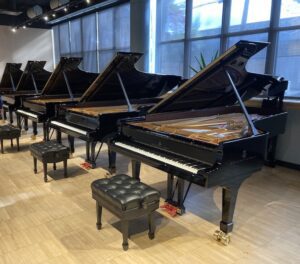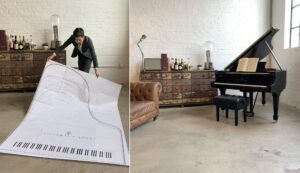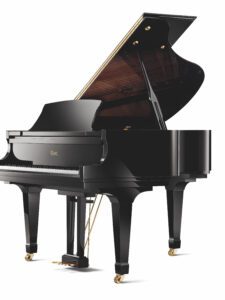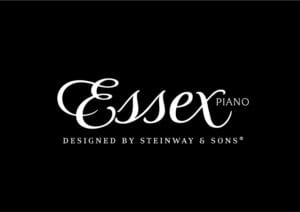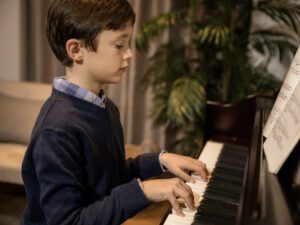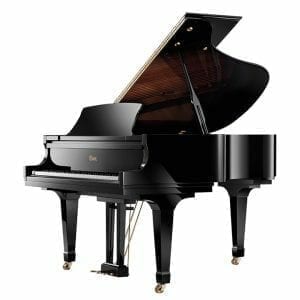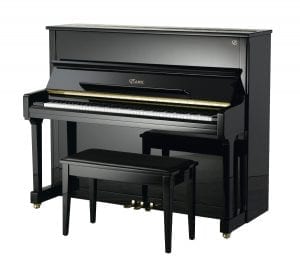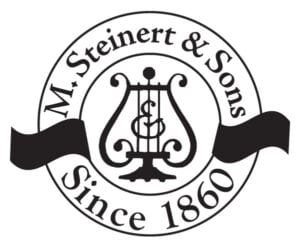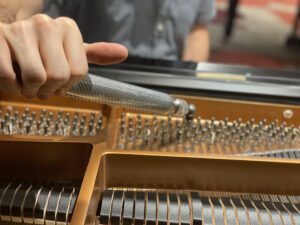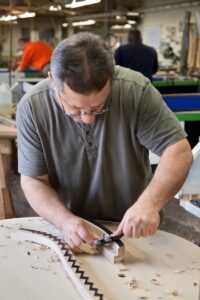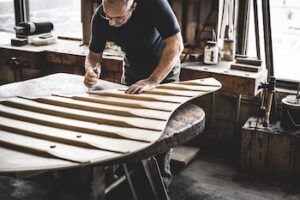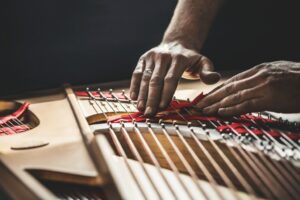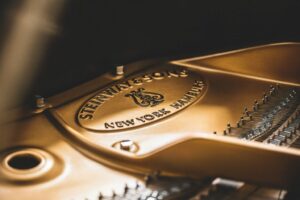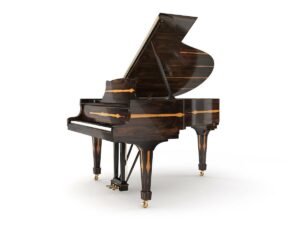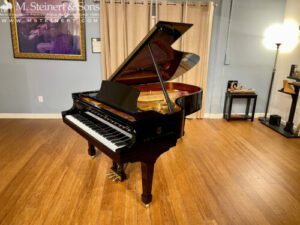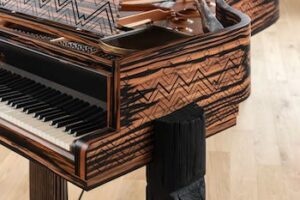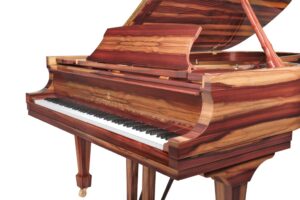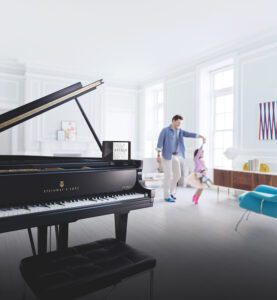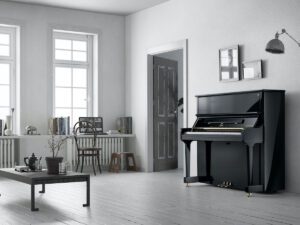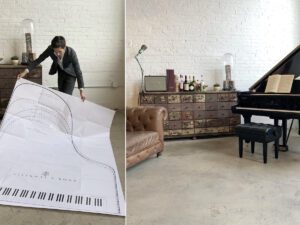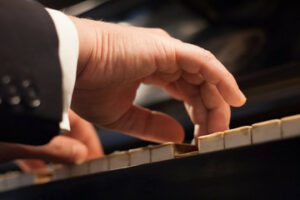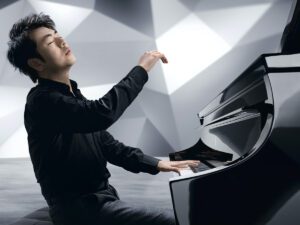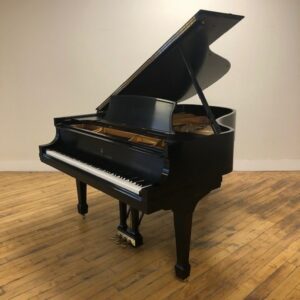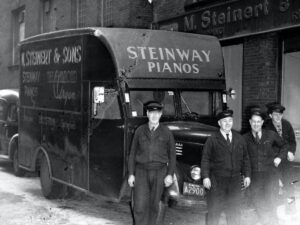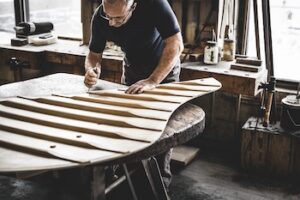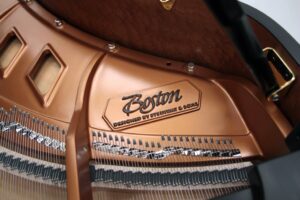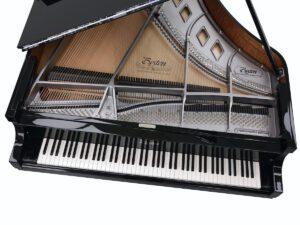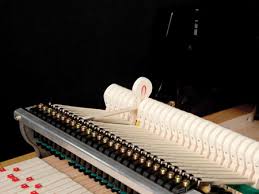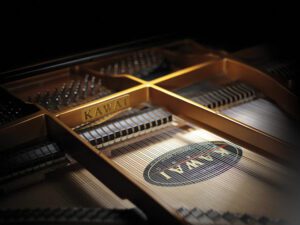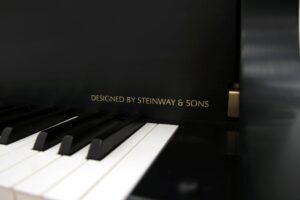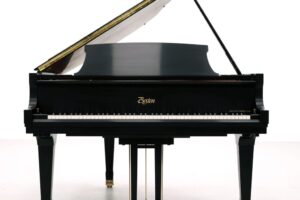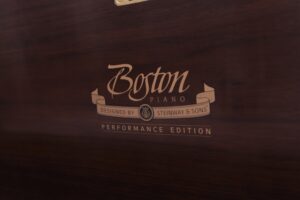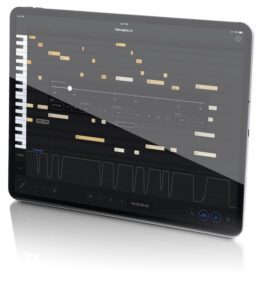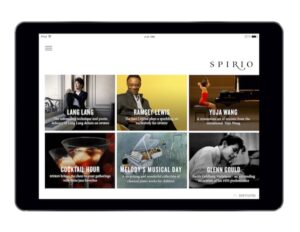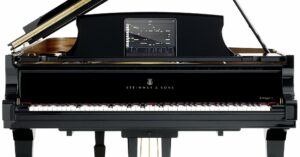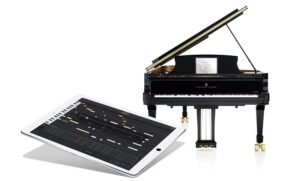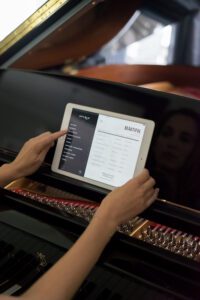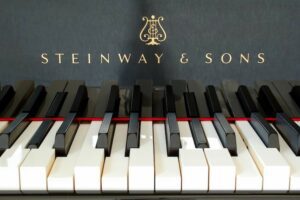How long does it take to build a Steinway? An in-depth look at every stage of the building process.
by Stephen N. Reed
As you tour the Astoria, New York Steinway factory, the fact that a Steinway piano takes nearly an entire year to complete begins to make sense.
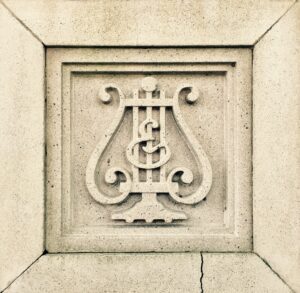
The painstaking attention given by the many factory craftspeople, the time involved in preparing and drying the woods involved point to this handcrafted process being one that simply cannot be rushed.
Without the knowledge of all that goes into a Steinway piano, buyers would not be able to appreciate fully what they have purchased. As the oldest Steinway dealer in the world, M. Steinert & Sons has been tracking the various Steinway models for over 150 years.
Knowing the Steinway handcrafted process and its improvements over the years is a key part of our business.
The entire process of creating a Steinway piano actually takes longer than the actual factory process. By the end of this article, you will understand how a piano made of specialty woods and by highly-skilled craftspeople is made, beginning with the materials involved. As we’ll see, some of those materials go back a very long way.
Here is a look at the different stages involved and the duration of each in this handcrafted process will explain why it takes 11 months to make a Steinway.
Step 1: Steinway only uses 200-year-old specialty wood (Duration: 1-2 years to dry)
Steinway carefully dries all the wood brought to the factory to build their pianos. Some wood is dried for up to two years before being used in the assembly process, first air-dried, then kiln-dried to prevent warping.
Only the best of the woods brought to the factory are used by Steinway. One wood is particularly special for conducting sound: the Sitka Spruce.
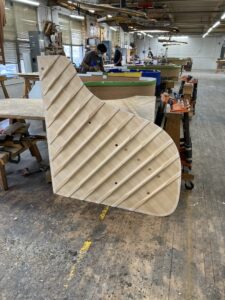
In the quest to build “the best piano possible,” Steinway evolved to use the Sitka Spruce from the Pacific Northwest for their patented Diaphragmatic Soundboard, which we will discuss further later in this article. This tightly-grained wood is exceptional for conducting sound.
Sitka Spruce is known for its high strength-to-weight ratio. Its excellent flexibility is essential for a piano soundboard that is meant to amplify sound and resonate with the vibration of a steel wire.
Steinway became convinced that no tree was better than the Sitka Spruce for their soundboards. Each of these trees is at least 200 years old when cut for use by Steinway.
As a result, there is another answer to the question, “How long does it take to build a Steinway?” In truth, this complex process begins at least 200 years before work starts for a year at the Astoria, NY factory.
Once the wood is dried, the building of a new Steinway can begin.
Step 2: Crafting the Steinway Bent Rim (Duration: Approximately 2.5 months)
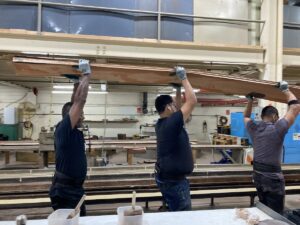
The Steinway Bent Rim is a key innovation that sets Steinway apart from other luxury pianos. Having a one-piece continuous Bent Rim, 2¾” thick, is one of the most significant technical innovations in piano building.
The rim provides the foundation for the stability of each Steinway grand piano and provides the structural integrity that enables a Steinway piano to endure for generations.
The rim of the Steinway Model B is comprised of 16 layers of Hard Rock Maple glued together, with both inner and outer rims being pressed together in a single operation. Five Steinway craftspeople bend the wood on a rim-bending press. They have to shape the rim within the time that the glue begins to dry, about twenty minutes.
After that, the rim is conditioned for two months.
An additional design feature involving the rim bears mentioning. To increase the surface square inch volume of the soundboard and thereby increase the overall resonance of the grand piano, Steinway widens the rear or “tail” of its larger grands.
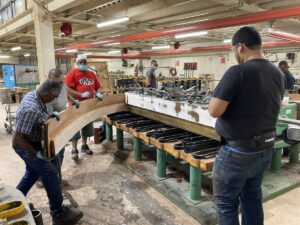
To increase the surface square inch volume of the soundboard and thereby increase the overall resonance of the grand piano, Steinway widens the rear or “tail” of its larger grand pianos to accommodate more of a vibrating surface area composed of the resonant spruce wood.
Once the labor-intensive rim building is completed, the rim, soundboard and cast-iron plate can be placed into the piano’s case. After this, the Steinway piano is beginning to take shape.
Step 3: Fitting the Braces/Plate/Case Structure (Duration: Approximately 1 month)
Now work turns to the Steinway craftspeople responsible for building the piano’s braces, which undergird the piano and all of its intricate parts. This takes about a week to complete.
The braces beneath the grand piano establish the structural foundation of the piano, much like the cement foundation of a house and will, in tandem with the cast iron plate above them, perform the primary function of withstanding the 40,000 pounds of string tension within a piano.
Spruce provides tensile strength with less weight. Maple dowels fasten braces to the rim producing a single homogenous foundation upon which is built the entire tonal component.
Step 4: Creating and placing the soundboard (Duration: Approximately 1 month)
A Steinway piano is built in the Astoria, NY factory from the inside out. Steinway’s assembly begins with skilled craftspeople creating and tapering Steinway’s patented “Diaphragmatic Soundboard” from the best planks of Sitka Spruce.
Steinway is particular about both the selection of the wood and the soundboard’s design. To meet the highest quality standards, Steinway uses only superior Sitka spruce with a close grain and a prescribed number of annual growth rings.
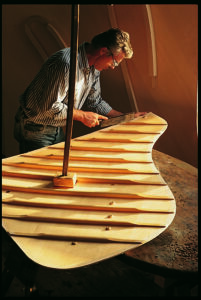
The result is a quarter-sawn Sitka Spruce soundboard, which has exceptional stability and vibrance under stress and vibration.
Steinway’s Diaphragmatic Soundboard is based on a 1936 patent to achieve optimum performance in dynamic range and maximum sustain. Under this patent, the soundboard is gradually tapered from the center to the edge, permitting freedom of movement and creating a sound of unparalleled richness and sustain.
Created like the soundboard of violins to give a free and even response throughout the entire scale, the Steinway design permits complete freedom of movement while displacing a greater amount of air, creating a richer and more lasting tonal response.
An essential aspect of Steinway’s overall design is to precision cut the soundboard to fit the rim of the piano. Since small variations exist between rims, a precision laser-guided saw is employed to yield a perfect final fit on a per-piano basis.
Great care is taken during the process of creating the soundboard. If it is damaged, the experience for both the player and the listener is altered. A soundboard can be cracked or have a fallen crown. Such repairs can be quite costly.
All told, Steinway’s soundboard takes about a month to make, with the last week being in a specialized conditioning room before installation. This is performed by a skilled artisan called a “bellyman” over the course of a full day.
Step 5: Constructing and Placing the Bridge (Duration: Approximately 1-2 weeks)
The assembly process next moves to the bridge. Steinway’s popular B and D models feature a single-piece bridge. This is sometimes called the “shepherd’s crook” bridge, a continuous bridge from the highest treble to the deepest bass.
This continuous bridge enables the instantaneous transfer of the vibrations of some 233 strings throughout the bridge and the soundboard, creating more color, more resonance, and more sustain.
Steinway constructs its soundboard bridges exclusively from vertically laminated hardwood with a horizontal grain, capped with solid maple.
Each bridge is notched by hand for precise, individual string-bearing–just one advantage of a handcrafted piano. This design ensures optimal sound transmission from the strings to the soundboard, resulting in a sustained, resonant tone—creating the unique “Steinway sound.”
Bridge work takes a couple of weeks to complete.
Step 6: Crafting the Hexagrip Pin block (Duration: Approximately 1 month)
Next in the production sequence is stringing the instrument. A particular part, patented by Steinway, is a key reason that Steinways hold tune well.
In 1963, Steinway introduced the Hexagrip Pin block, which is engineered to enable pianos to hold their tuning longer and with great precision. This comes from 7 carefully selected and arranged layers of quarter-sawn rock maple.
The exclusive design provides end grain of the wood surrounding the tuning pin and allows smoother movement under torque, a more uniform retaining action, and a piano that holds its tuning longer. Between wood selection, laminating, curing, fitting and drilling the Hexagrip Pin block takes approximately one month or more to finish.
Step 7: Checking the action and tone regulation (Duration: Approximately 3 weeks)
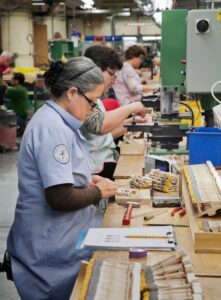
Another part of the production process involves the piano’s action. Steinway’s hammers are made at the Steinway factory in Astoria, NY. Craftspeople ensure the action’s uniformity in terms of a piano’s keys striking the newly-placed strings.
The Tone Regulation Department at the Astoria NY factory is where a Steinway develops into a musical instrument. Here, each of the piano’s keys is adjusted by hand to ensure an even tone for the piano overall.
The action’s hammers are either made harder by applying lacquer to the hammer’s felt or softer by pricking the felt with a needle. The right tone for a Steinway is bell-like, even, and well-rounded. This process of installing the piano’s action and subsequent tone regulation takes 2 weeks.
The Steinway piano is now assembled. Steinway’s yearlong process is almost complete.
Step 8: Applying the finishing touches (Duration: Approximately 4 months)
The final step in this elaborate handcrafted process is the exterior finish. Six coats of paint are applied with a precise amount of time between each coat.
After Steinway craftspeople have completed the painting, the case stands for a week, allowing the paint to harden, thereby protecting the piano’s finish. This finishing process takes 3 months.
Depending upon the finish of the piano, including whether it’s ebony polished, ebony satin, or a crown-jewel wood veneer, this step can vary in duration and order in the production process
Step 9: Testing, making any needed adjustments (Duration: Approximately 1 week)
Testing of the Steinway piano can now commence through a series of double-checking, fine-tuning, adjustments, and breaking in the keyboard.
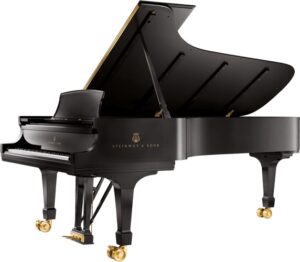
For example, the Astoria, NY factory has a Pounding Room where each of the piano’s 88 keys is played over 3,000 times. All of these tests and adjustments are aimed at perfecting each piano’s sound before heading to market and take about a week to complete.
After 11 months, the world has a new Steinway that’s ready to be played.
The nearly yearlong Steinway building process is the work of scores of the Astoria, NY factory’s craftspeople in each stage of the piano’s creation.
Once this process is completed, the new Steinway model is shipped to one of Steinway’s dealers in the Western Hemisphere. The company’s Hamburg, Germany factory ships their new Steinways across Europe, Africa, and Asia.
With the current, industry-wide piano shortage, this year’s Steinways may have less time than usual on the showroom floors.
However, Steinway is working to produce more of their renowned handcrafted pianos so that more people can enjoy the Steinway touch and tone, perfected by the team at the Astoria and Hamburg factories.
For more information about the Steinway factory process, click below for a helpful article:
What is a Steinway factory tour like?

